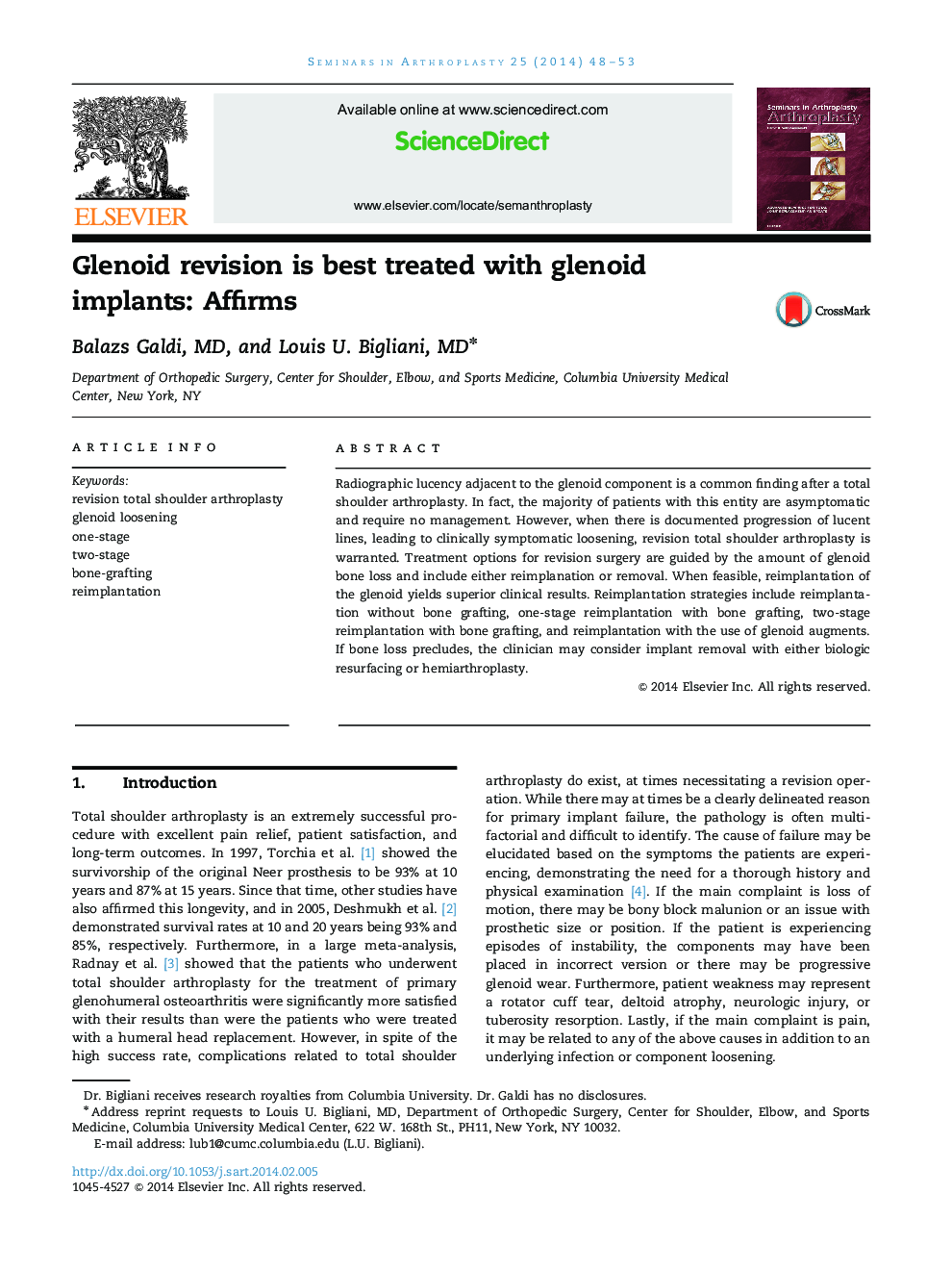| Article ID | Journal | Published Year | Pages | File Type |
|---|---|---|---|---|
| 4093986 | Seminars in Arthroplasty | 2014 | 6 Pages |
Radiographic lucency adjacent to the glenoid component is a common finding after a total shoulder arthroplasty. In fact, the majority of patients with this entity are asymptomatic and require no management. However, when there is documented progression of lucent lines, leading to clinically symptomatic loosening, revision total shoulder arthroplasty is warranted. Treatment options for revision surgery are guided by the amount of glenoid bone loss and include either reimplanation or removal. When feasible, reimplantation of the glenoid yields superior clinical results. Reimplantation strategies include reimplantation without bone grafting, one-stage reimplantation with bone grafting, two-stage reimplantation with bone grafting, and reimplantation with the use of glenoid augments. If bone loss precludes, the clinician may consider implant removal with either biologic resurfacing or hemiarthroplasty.
